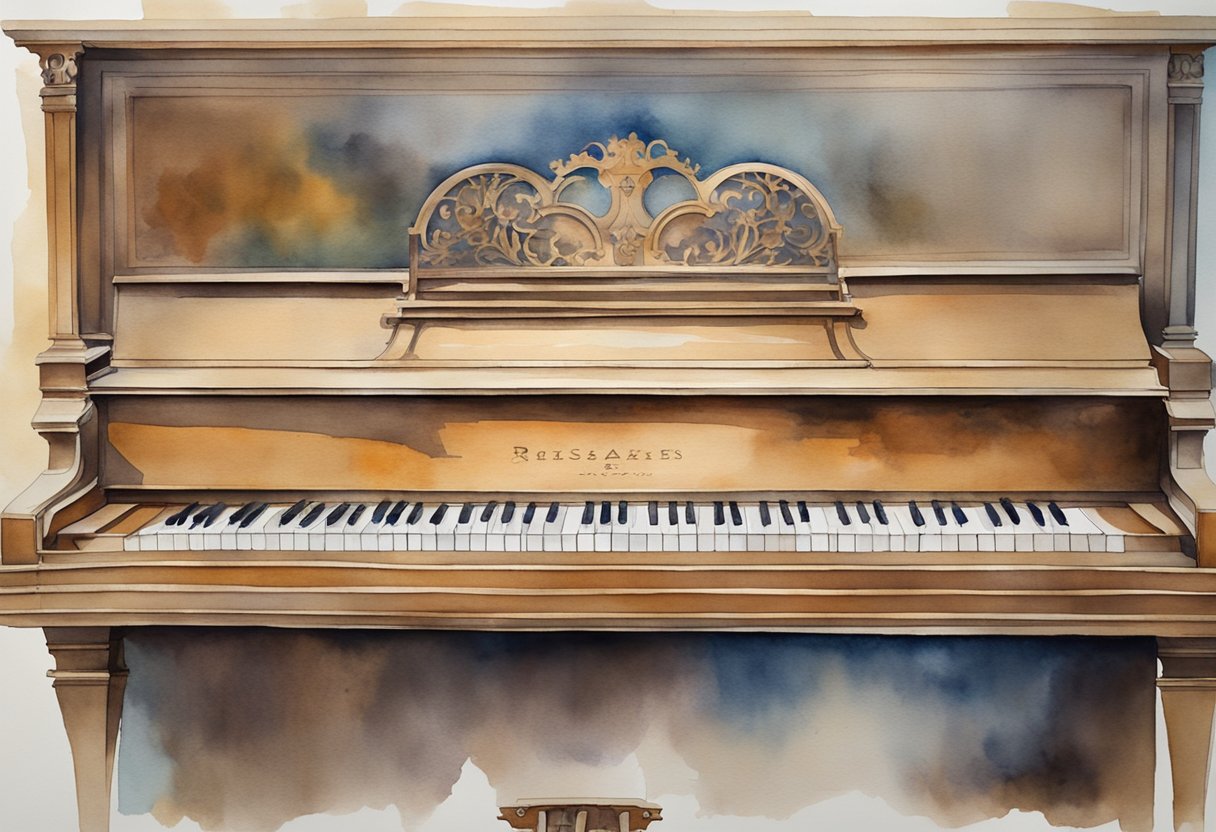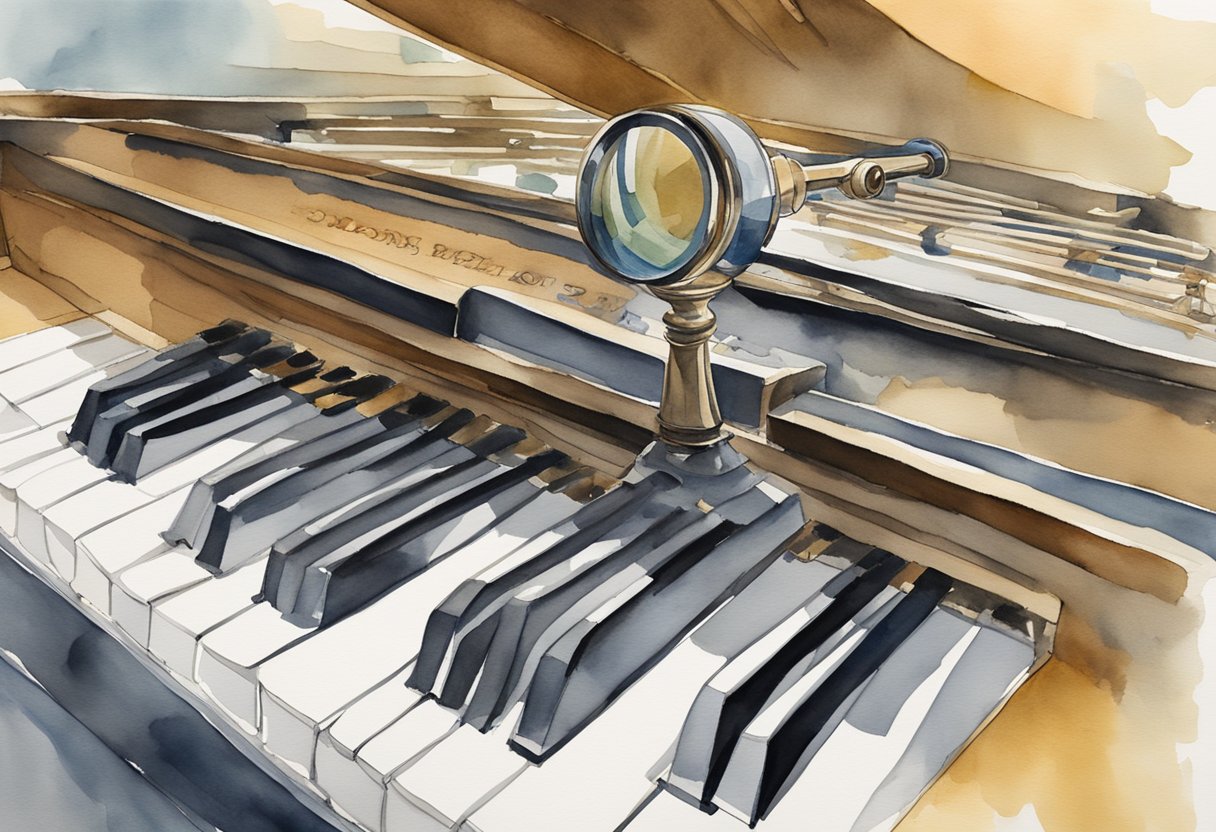As an Amazon Associate I earn from qualifying purchases.
Determining the age of a piano can unveil much about its character and history. For instance, when I come across a Steinway, I always look for the serial number, which is a unique identifier that tells us the year of manufacture.
This method is akin to determining the vintage of a fine wine, as the serial number can reveal the narrative of the piano’s journey through the years, from its creation to its present life. The placement of the serial number varies; some manufacturers put it inside the piano on the cast iron plate, while others place it on the back or soundboard.
Want to Learn Piano?Click Here

Throughout my experience teaching music, I’ve encountered many pianos, each with its distinct timbre and touch, reflective of its age and make. Let’s say you have a Yamaha piano; the serial number can often be found by lifting the lid and looking inside, near the strings and tuning pins.
The piano’s age can inform you about the potential need for tuning or restoration, which is a crucial part of its upkeep. It’s fascinating how a piano’s age can affect its sound; older pianos might have a warmer, mellower sound, which some musicians and listeners prefer.
Finding out your piano’s age is akin to connecting with the instrument’s past, understanding the legacy embedded in its keys and strings.
Determining the Age of Your Piano

When you come across a beautiful piano, it’s natural to be curious about its history. The age of a piano can unlock stories of music and memories. Let’s find out just how old your piano is.
Locating the Serial Number
Your piano’s serial number is the key to unlocking its age. You’ll typically find this number stamped on the piano’s frame, soundboard, or plate, often behind the music rest, or inside the piano near the tuning pins. For brands like Steinway or Yamaha, the serial number can be found in different places based on the model, so make sure to check in all the common locations.
Understanding Manufacturer Codes
Each manufacturer uses a unique serial number system that corresponds to the year of manufacture. For example, a Chickering piano with a serial number starting with “135” could indicate that the piano was manufactured in the early 1900s.
Using Online Piano Age Calculators
Online tools, like Piano Age Calculators, can be extremely helpful. Once you’ve found your serial number, these calculators allow you to input the number to retrieve the age of your piano. Some databases cover a wide range of brands, including Kawai and Wurlitzer, and provide insights within certain date ranges or increments.
Visual Clues
You can sometimes tell the age of a piano just by looking at it. Here are a few specifics on that:
- Overall Wear and Tear: Pianos that have been heavily used may show signs of wear on the keys, pedals, and finish. This can indicate an older instrument that has seen a lot of use over the years.
- Design and Style: The design and styling of a piano, including the shape of the legs, the type of wood, and decorative elements, can reflect the period in which it was manufactured. Certain styles are characteristic of specific historical periods.
- Condition of the Hammers: The hammers inside a piano can show how much use the piano has had. Heavily worn hammers may suggest an older piano, especially if they appear to be original.
- Fading and Discoloration: Sunlight and exposure to the elements can fade and discolor the wood and finish of a piano over time. An older piano may have uneven coloring or areas that have been more exposed to light and have faded more significantly
Historical Brand Information
Additional historical brand insights are invaluable when determining your piano’s age. For instance, if you’re looking at a Knabe piano, understanding that production ceased in the 1980s gives you a cutoff for its age. Conversely, for Ivers & Pond pianos, you might use historical records to connect your piano to a specific era of American piano manufacturing.
Hello & thanks for stopping by! I’m a professional concert pianist and piano instructor. In the United States, I’ve given successful performances in several places including New York, Florida, Connecticut, & New Jersey, I have also performed internationally in Italy and made my Carnegie Hall debut in 2014. I enjoy blogging about the piano, the art of performance, general music, current events and the latest in music production.
